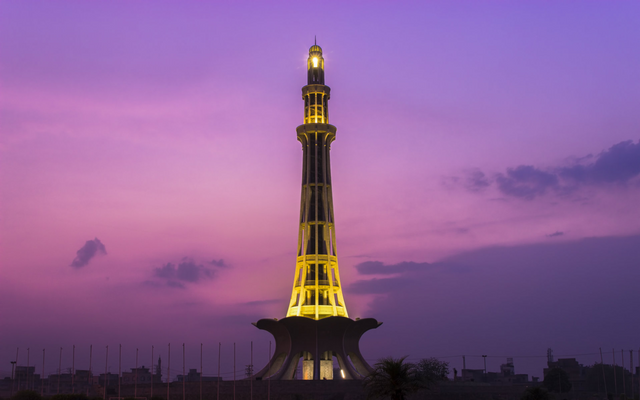Pakistan is a country which is absolutely a gem for the tourists. The main reason is that it has got flavor for all types of tourists and beautiful locations, mountains, landscapes, large cities and the historic places can be witnessed here. The historical places in Pakistan dominate the entire arena because of its rich history and one of the oldest civilizations of this world had lived where Pakistan stands today.
Mohenjo-Daro

Mohenjo-Daro is probably the most attractive historic lace in the country which is famous all through the world. It is part of the Larkana District of the province of Sindh and it is just at the right bank of the mighty River Indus. The archeological ruins of the place take us back into the history till 3000BC. So, this makes it a 5000 years old city which is the oldest civilization known to man after the Chinese. It was also the urbanized and the largest civilization in South Asia. They were first discovered in the year 1922 but, it was the year 1965 when significant excavations were completed. Now, people come from all over the places to witness this historic site.
Badshahi Mosque

The Great Badshahi Mosque is one of the oldest mosques of the region which was built in the Mughal Era by the Great Emperor Aurangzeb. It was constructed in the year 1671 and today it is the second largest mosque in the country after Shah Faisal Mosque. It can accommodate as much as 100,000 worshippers at a time when all its halls and courtyards are occupied. It was till 1986, that this historic mosque was known as the largest mosque in the world. But, with Shah Faisal Masjid and several other mosques in the entire world were constructed which were bigger than this one. But, that doesn’t take away any credit from this mosque as it is still one of the most frequently visited historic places in Pakistan.
Makli

Makli is actually a necropolis in the famous and the historic city of Thatta. The history of Makli dates back to the 14th century. People flock here from different parts of the country and even from outside Pakistan for witnessing the amazing mausoleums and the monuments in the country. The best thing about the place is that it is built with the use of some really top quality stone, glazed tiles and the bricks which represents the actual Sindh civilization of the time.
Minar-e-Pakistan

On 23 March 1940, the All-India Muslim League passed a resolution that represented the decisive step towards the foundation of Pakistan. Twenty years later, on the site in Lahore where that historical event had taken place, construction work began on a commemorative monument, the Minar-e-Pakistan, which was completed eight years later. The Minar-e-Pakistan is a 62-meter-high minaret rich in symbols standing for the history of Pakistan. The tower is laid on an elevated base, in the shape of a five-pointed star, which comprises of four platforms. The stones used to build each platform are progressively more refined from the bottom up (ranging from uncut stones to polished white marble), to signify the difficult developments but final success of the Pakistan Movement for independence. Like Islamabad’s Pakistan Monument, this landmark’s lower part is built in the shape of a blossoming flower, from which the tower rises as a symbol of the country’s birth. The Minar-e-Pakistan is situated in a large park, quite popular among Lahorites, which is visible along with pretty much the entire city from the minaret’s top dome.
Faisal Mosque
When Turkish architect Vedat Dalokay‘s design was chosen for the Faisal Mosque, many raised their eyebrows. The project differed from traditional mosque architecture, as it featured contemporary, sleek lines and, most notably, lacked a dome. Construction work began in 1976 and was finally completed ten years later. By then, most criticism had crumbled in front of the imposing, captivating building that now dominates Islamabad, Pakistan’s capital city, from its elevated position at the foot of the Margalla Hills. The mosque is named after Faisal bin Abdul-Aziz, the Saudi king who suggested the idea of a national Pakistani mosque, and largely financed its construction. The 5,000-square-meter prayer hall is an eight-sided, concrete structure, inspired by the traditional tents of Bedouins, with a capacity for 100,000 worshippers. It’s surrounded by four 88-metre-high minarets in perfect one-to-one ratio with the base. They were designed as the sides of an imaginary cube, in honor of the sacred, cubic Kaaba found at the centre of Mecca’s most important mosque.
Takht-i-Bahi

The literal meaning of Takht-i-Bahi is the ‘spring throne’ which refers to the monastic complex of the Buddhists dating back to the 1st century BC. It is situated right up a 152 m hill and the place is about 16 km from Mardan city and some 80 odd km from the Peshawar city. It has four major parts which are its Stupas courts, monastic complex, tantric complex and a temple complex.
This post has received a 13.33 % upvote from @chronocrypto thanks to: @manzoor-hocain.
Downvoting a post can decrease pending rewards and make it less visible. Common reasons:
Submit